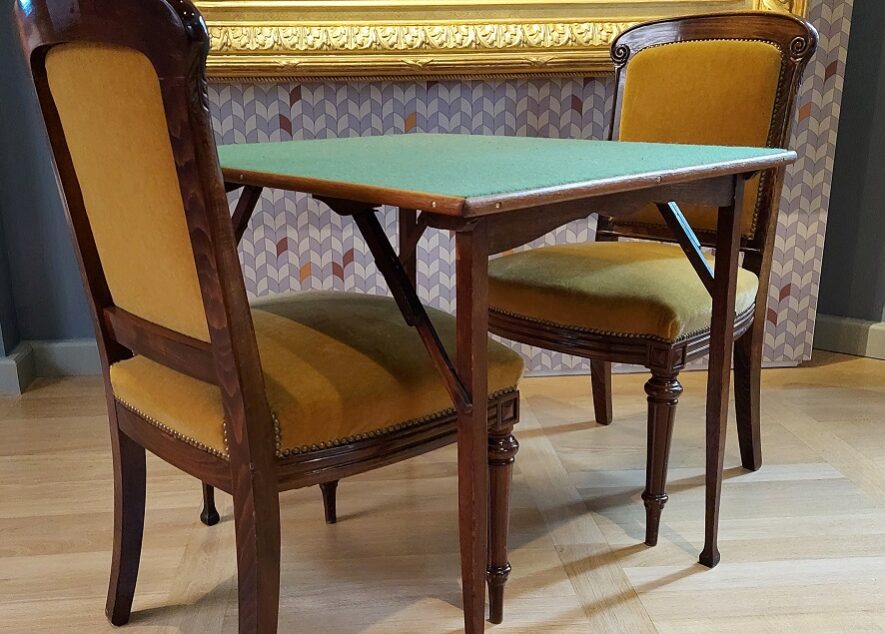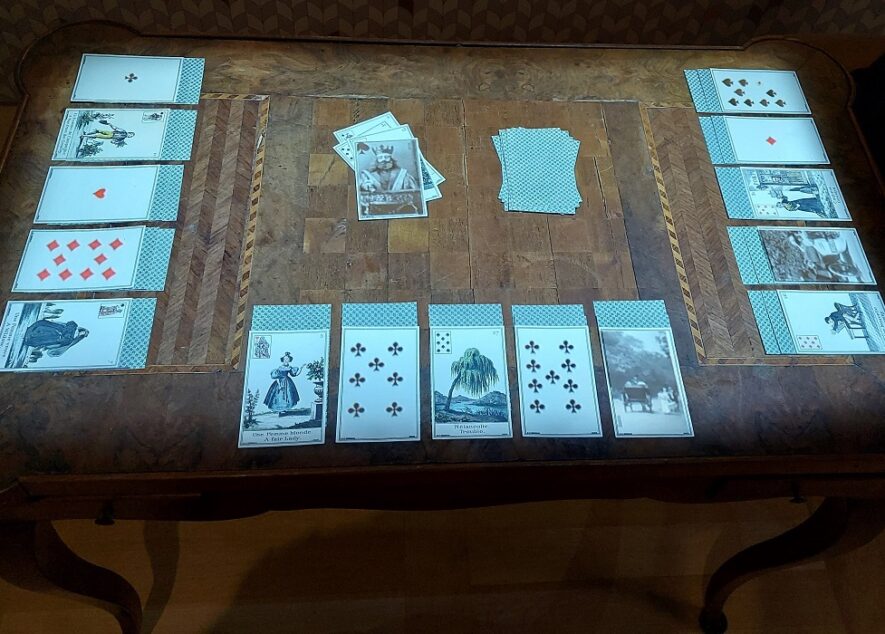
Reynaldo Hahn's bridge table
circa 1910
wood, textile
Reynaldo Hahn's family collection
Reynaldo Hahn’s bridge table
Marcel Proust met Reynaldo Hahn (1874-1947) on 22 May 1894, in the prestigious salon of Madeleine Lemaire (1845-1928), one of Madame Verdurin's inspirations in ‘In Search of Lost Time’. The musician became one of her greatest loves.
